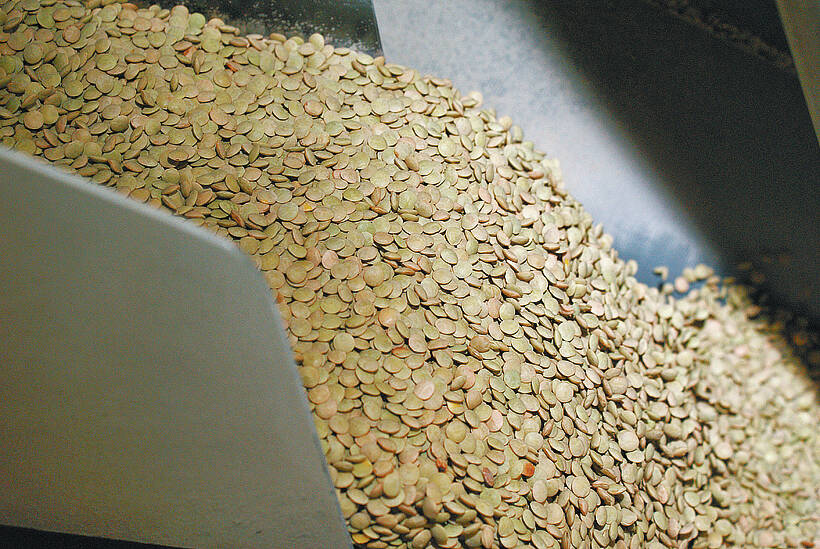Record high U.S. wheat and durum prices in February and March had Canadian growers looking enviously across the border.
There were complaints that U.S. farmers were reaping the benefits of the soaring market while Canadian farmers were missing out.
But a comparison of the average price received by U.S. growers for spring wheat sold in 2007-08 and the Canadian Wheat Board’s Pool Return Outlook indicates that the Canadian pooling system worked well in this situation.
According to the comparison, the Canadian year long average price as shown in the PRO was close to a dollar a bushel or more for wheat and durum than the average of U.S. sales.
Read Also

Green lentil market oversupplied
Farmers in Western Canada can expect price pressure on their new crop of green lentils, as the available supplies among the world’s major lentil-growing nations increase significantly.
The U.S. Department of Agriculture says the average selling price of all grades of hard red spring wheat in the U.S. in 2007-08 (June to May) was $7.21 a bu.
The wheat board’s PRO for CWRS wheat for 2007-08 (August to July), after deductions, basis Manitoba ranges from $8.75 a bu. for 1 CWRS 14.5 percent protein to $8.10 for 3 CWRS with no protein premium.
That’s a spread of 90 cents to $1.50 a bu. above the average U.S. price.
U.S. prices are quoted in U.S. dollars, Canadian prices in Canadian dollars. The two currencies were roughly at par during the 2007-08 crop year.
The story was much the same for durum.
The average selling price for all grades in the United States in 2007-08 was $9.92 a bu.
In Canada, the PRO for durum ranges from $12.08 a bu. for 1 CWAD 14.5 percent protein to $11.67 for 3 CWAD 13 percent.
That’s a gap of more than $1.50 a bu.
Because the U.S. price is an average, some farmers obviously received more than that, especially if they were among the lucky few who had wheat to sell when cash elevator prices rose to dizzying heights of $20 a bushel in February.
However, little wheat was sold at those high prices.
USDA figures indicate that about two-thirds of the U.S. wheat crop was sold from June to September. Only nine percent was sold from February to April.
While that number includes all types of wheat, a USDA official said the same pattern would apply to hard red spring wheat and durum.
Erica Peterson, marketing specialist with the North Dakota Wheat Commission, said that’s what happened in her state.
She estimated 65 to 70 percent of the North Dakota wheat and durum crop was priced and sold in the first few months of the marketing year, when prices were $5 to $7 a bu.
After years of low returns, those prices looked good and producers were quick to sell.
“Most producers were very satisfied with those prices and still made a good profit.”
The lofty heights that wheat prices reached this year indicate that not many farmers sold at those levels, she added.
“If everyone had saved their wheat, we wouldn’t have seen those levels because the high prices reflected a shortage of wheat to be delivered.”
The CWB is preparing a price comparison analysis that will be released at the board’s crop year-end news conference July 31.














